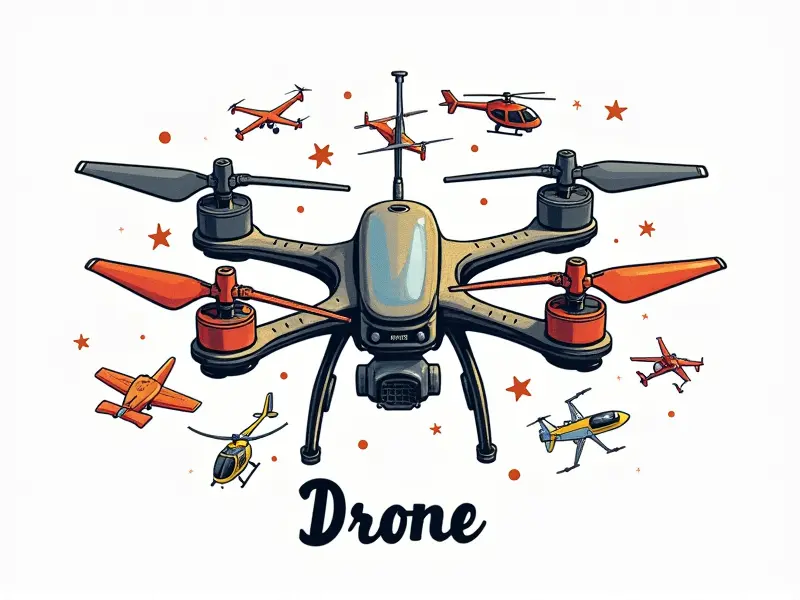Drone aerial photography tips

Master Drone Photography Basics Today
Welcome to the world of drone aerial photography! Whether you're a beginner or an experienced photographer looking to elevate your skills, mastering the basics is crucial. Understanding how to operate your drone efficiently and safely will set the foundation for capturing stunning aerial shots.
- Learn Flight Regulations: Familiarize yourself with local laws and restrictions regarding drone usage in your area.
- Master Basic Controls: Get comfortable with takeoff, landing, and maneuvering your drone. Practice in open spaces to build confidence.
- Understand Camera Settings: Experiment with different modes such as aperture priority, shutter speed, and ISO to control exposure and depth of field.
Top Tips for Stunning Aerial Shots
To capture breathtaking aerial shots, follow these top tips:
- Panoramic Views: Utilize your drone's ability to fly high and wide to create panoramic images that showcase expansive landscapes.
- Motion Blur: Use slow shutter speeds to capture motion blur in moving water or clouds, adding a dynamic element to your shots.
- Night Photography: Experiment with night photography by capturing the city skyline or natural light sources like stars and moonlight.
Best Angles for Drone Photography
The angle at which you capture an image can make all the difference. Here are some of the best angles to consider:
- Low Angle: Fly close to the ground or objects to create a dramatic perspective, emphasizing height and depth.
- High Angle: Elevate your drone for an overhead view that provides context and scale. This is great for architectural shots and landscapes.
- Tilted Angles: Tilt the camera to capture unique perspectives, adding visual interest and creativity to your images.
Lighting Secrets for Drone Shots
Mastery of lighting is essential in drone photography. Here are some secrets to enhance your photos:
- Golden Hour: Capture during the golden hour (early morning or late afternoon) when the light is soft and warm, creating a magical glow.
- Natural Light Sources: Use natural light sources like reflections off water bodies or sunlight filtering through trees to add depth and texture.
- Overcast Skies: Overcast conditions can provide even lighting, reducing harsh shadows and highlighting details in your shots.
Composition Rules for Aerials
Effective composition is key to creating visually appealing aerial images. Here are some rules to follow:
- The Rule of Thirds: Position important elements along imaginary lines dividing the frame into thirds.
- Framing Elements: Use natural or man-made framing elements like archways, trees, or buildings to draw attention to your subject.
- Balanced Composition: Ensure that the visual weight of your image is balanced, creating harmony and stability in your shots.
Post-Processing Tips for Drones
Post-processing can take your drone photos to the next level. Here are some tips to enhance your images:
- Adjust Exposure: Fine-tune exposure levels to bring out details in shadows and highlights.
- Sharpen Images: Apply sharpening techniques to make your photos crisp and clear, enhancing texture and detail.
- Add Contrast: Increase contrast to add depth and dimensionality to your images, making them more engaging.
Essential Gear for Aerial Shoots
The right gear can make a significant difference in the quality of your aerial shots. Here’s what you should consider:
- Durable Drone: Invest in a high-quality drone designed for durability and reliability.
- Backup Batteries: Bring extra batteries to ensure continuous shooting without interruptions.
- Protective Gear: Use cases, protective covers, and other accessories to safeguard your equipment from damage.
Common Mistakes in Aerial Photography
Avoid these common mistakes to improve the quality of your aerial photography:
- Lack of Planning: Always plan ahead by scouting locations and checking weather conditions before shooting.
- Inadequate Battery Management: Keep an eye on battery levels and avoid running out mid-flight.
- Neglecting Safety Regulations: Adhere strictly to local regulations regarding drone usage to prevent legal issues.
Elevate Your Shots with Advanced Drone Techniques
To take your aerial photography to the next level, consider these advanced techniques:
- Drone Racing: Participate in drone racing events for a thrilling experience and unique photo opportunities.
- 360-Degree Panoramas: Capture 360-degree panoramas to provide viewers with an immersive visual experience.
- Time-Lapse Photography: Create stunning time-lapse videos by capturing sequences of images over a period and stitching them together.
Quick Guide to Perfecting Aerial Photography
Perfect your aerial photography skills with this quick guide:
- Practice Regularly: The more you practice, the better you'll become. Experiment with different settings and techniques.
- Seek Inspiration: Look at other photographers' work for inspiration and learn from their styles and compositions.
- Stay Updated: Keep up-to-date with new drone models, features, and software updates to stay ahead in the field.
Secrets of Taking Amazing Drone Pictures
The key to taking amazing drone pictures lies in creativity and attention to detail. Here are some secrets to unlock:
- Tell a Story: Capture moments that tell a story, evoking emotions and connecting with viewers on a deeper level.
- Creative Use of Shadows: Utilize shadows creatively to add depth and dimensionality to your shots.
- Experiment Continuously: Don't be afraid to try new things. Experimenting can lead to unique and memorable images.
Conclusion
Mastery of drone aerial photography requires a combination of technical skills, creativity, and attention to detail. By following the tips outlined in this article—from mastering basic controls to experimenting with advanced techniques—you'll be well on your way to capturing stunning aerial shots that stand out. Remember to practice regularly, stay updated with new technologies, and always prioritize safety and legal compliance.

